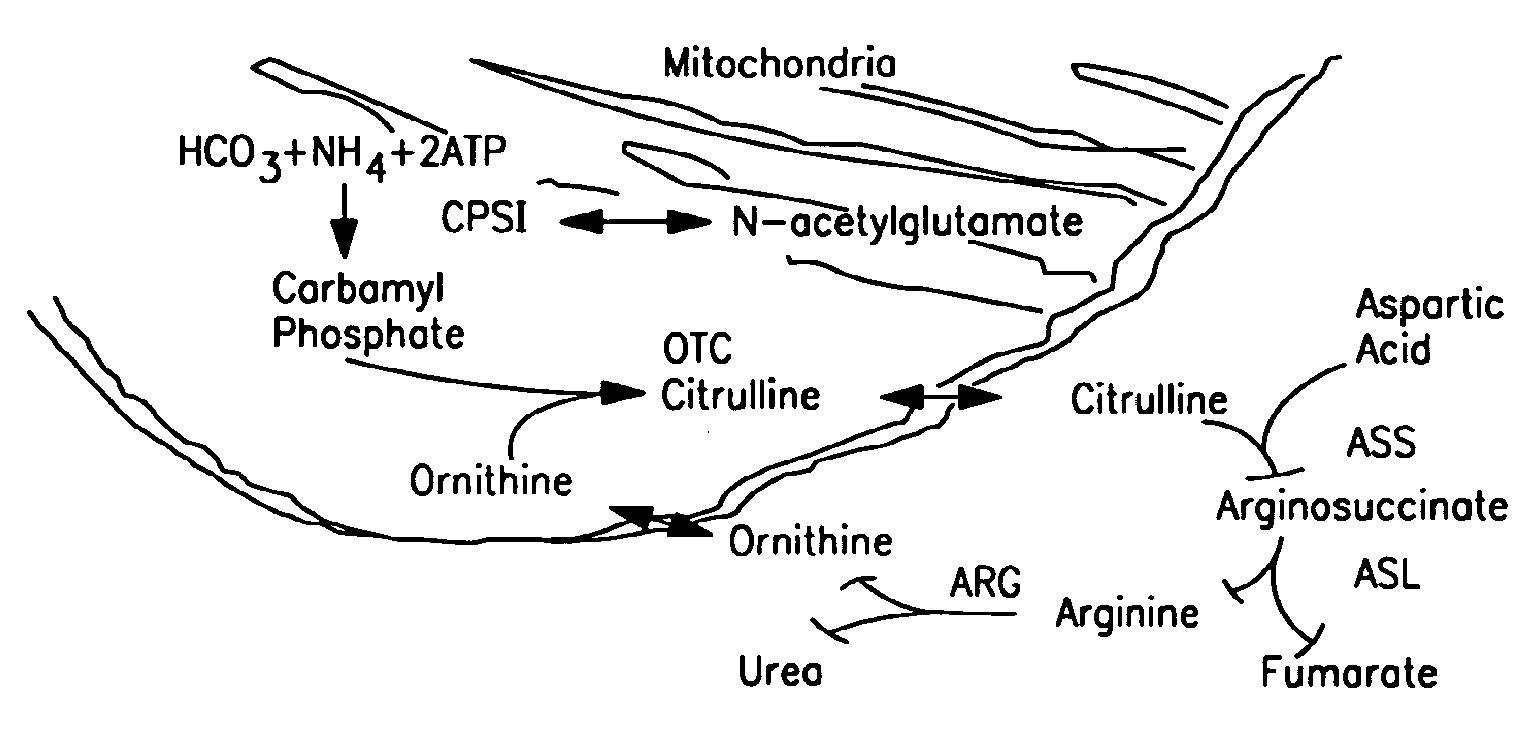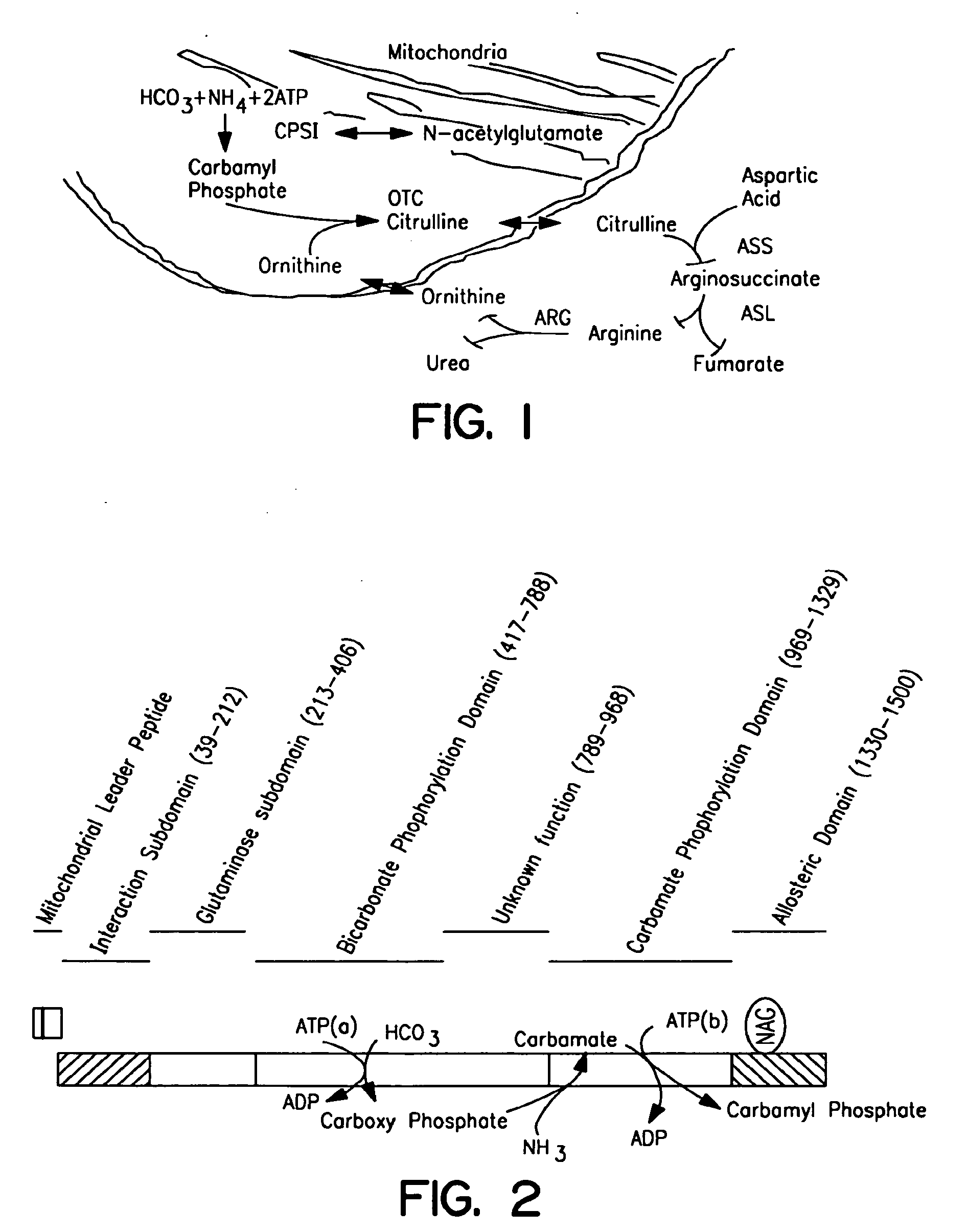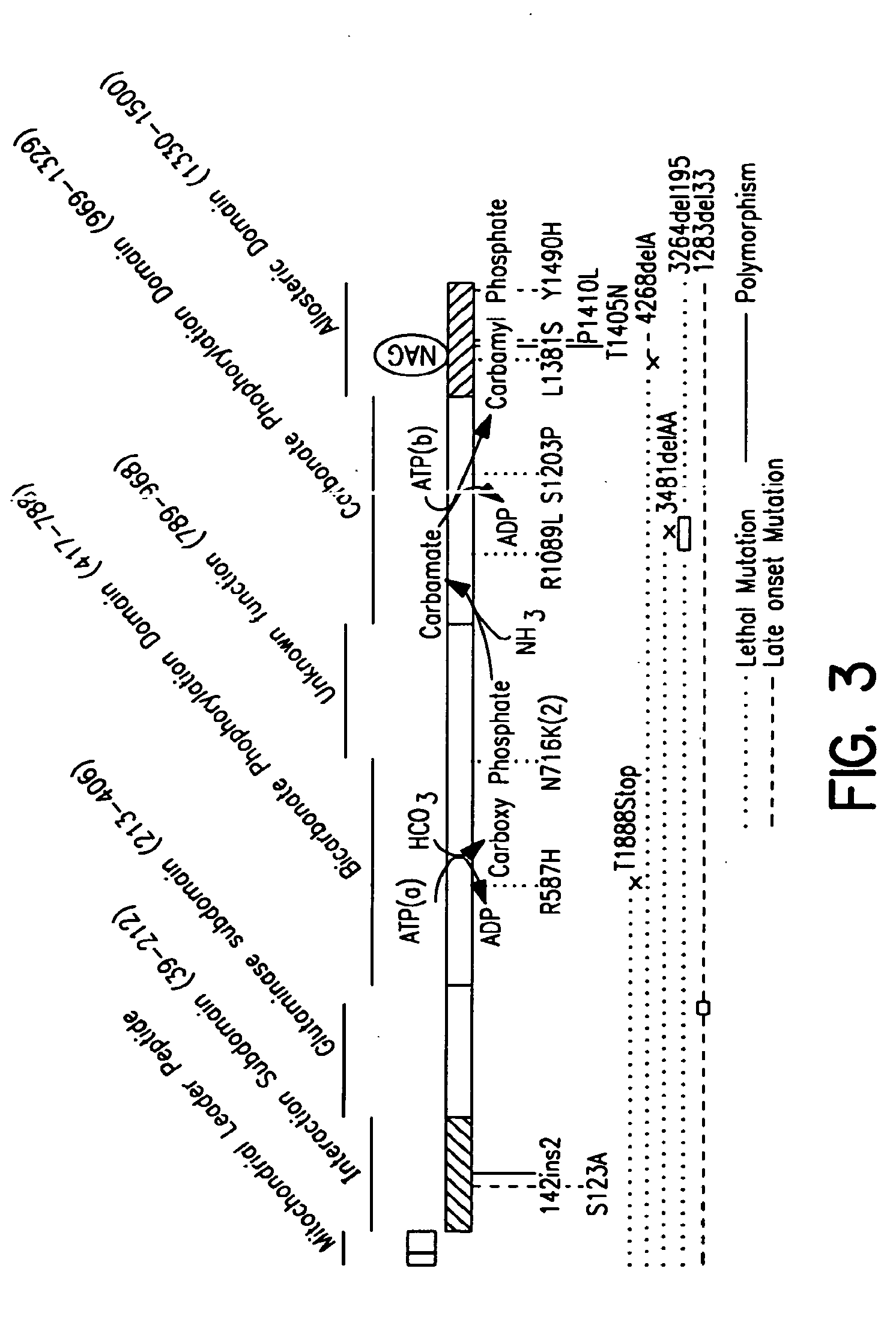Therapeutic methods employing nitric oxide precursors
a technology of precursors and nitric oxide, applied in the field of isolated polynucleotide molecules, can solve the problems of limiting the first critical step of the urea cycle to the liver and gut, and affecting the urea cycl
- Summary
- Abstract
- Description
- Claims
- Application Information
AI Technical Summary
Problems solved by technology
Method used
Image
Examples
example 1
Alleles of CPSI Exonic Polymorphism (T1405N) are not in Hardy-Weinburg Equilibrium with the Presence or Absence of HVOD
[0306]In accordance with the present invention, a common polymorphism near the 3′ end of the CPSI mRNA (about 0.44 heterozygosity) has been identified. Sequence analysis of this change revealed a C to A transversion at base 4340 changing the triplet code from ACC to AAC. This results in a substitution of asparagine for threonine at amino acid 1405 (referred to herein as “T1405N”). The threonine is within the allosteric domain, preceding the signature sequence PV(A / S)WP(T / S)(A / Q)E, a sequence that is important in the binding of the cofactor n-acetyl-glutamate (NAG).
[0307]In all known CPSIs activated by NAG, a threonine residue is among the two residues that precede the signature sequence. (Rubio, Biochemical Society Transactions 21:198-202 (1998)). On the basis of structure-function studies, hydrogen bond formation with the carbonyl oxygen of the acetamido group of ...
example 2
Biochemical and Genetic Alterations in Carbamyl Phosphate Synthetase I in Patients with Post-Bone Marrow Transplant Complications
[0312]Bone marrow transplantation (BMT) and peripheral blood stem cell transplants (PBSCT) are increasingly being used as primary therapy for selected malignancies. Use of stem cell support for hematopoietic reconstitution allows for substantial escalation in the dose of chemotherapy in an attempt to eradicate potentially lethal cancers. With improvements in prophylaxis for infection and prevention of disabling graft-versus-host disease, chemotherapy-induced organ dysfunction remains a significant barrier to more widespread use of this treatment.
[0313]Hepatic venocclusive disease (HVOD), a clinical syndrome of hyperbilirubinemia (serum bilirubin >2.0 mg / dL), hepatomegaly, and fluid retention early after BMT, is a major dose-limiting toxicity after BMT, afflicting up to 54% of patients. Many patients developing HVOD after BMT will also meet the criteria for...
example 3
Arciinine / Citrulline Supplementation Therapy
[0338]The added decrease in urea cycle products (arginine and citrulline) and increase in precursors (ammonia, glutamine, etc.) resulting from the polymorphism contribute to BMT associated toxicity. As part of the BMT Life Study, citrulline and arginine levels were measured in 10 patients undergoing BMT.
[0339]High-dose chemotherapy used in BMT disrupts normal functions of urea cycle enzymes and contributes to either the occurrence of or toxicity associated with HVOD. To further evaluate this information, an analysis of stored plasma from ten patients undergoing BMT before treatment and after completion of induction chemotherapy was performed. Amino acid profiles were determined from all samples. Particular attention was paid to the urea cycle intermediates citrulline, arginine, and ornithine. As shown in Table 4, a marked decrease in citrulline levels of all patients from a pre-treatment baseline mean of 24±3 μmol / L to a post-treatment mea...
PUM
| Property | Measurement | Unit |
|---|---|---|
| temperature | aaaaa | aaaaa |
| temperature | aaaaa | aaaaa |
| temperatures | aaaaa | aaaaa |
Abstract
Description
Claims
Application Information
 Login to View More
Login to View More - R&D
- Intellectual Property
- Life Sciences
- Materials
- Tech Scout
- Unparalleled Data Quality
- Higher Quality Content
- 60% Fewer Hallucinations
Browse by: Latest US Patents, China's latest patents, Technical Efficacy Thesaurus, Application Domain, Technology Topic, Popular Technical Reports.
© 2025 PatSnap. All rights reserved.Legal|Privacy policy|Modern Slavery Act Transparency Statement|Sitemap|About US| Contact US: help@patsnap.com



